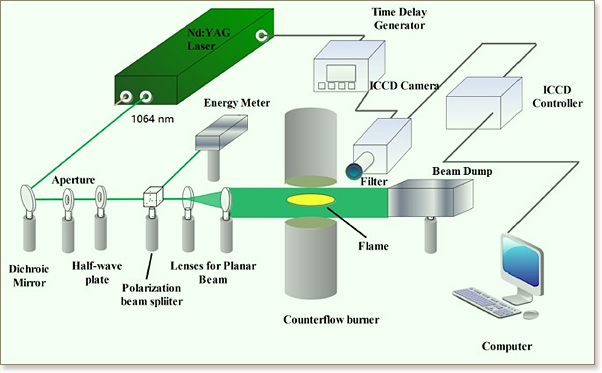Compositional effects on PAH and soot formation in counterflow diffusion flames of gasoline surrogate fuels


Gasoline surrogate fuels are widely used to understand the fundamental combustion properties of complex refinery gasoline fuels. In this study, the compositional effects on polycyclic aromatic hydrocarbons (PAHs) and soot formation were investigated experimentally for gasoline surrogate mixtures comprising n-heptane, iso-octane, and toluene in counterflow diffusion flames. A comprehensive kinetic model for the gasoline surrogate mixtures was developed to accurately predict the fuel oxidation along with the formation of PAHs and soot in flames. This combined model was first tested against ignition delay times and laminar burning velocities data. The proposed model for the formation and growth of PAHs up to coronene (C24H12) was based on previous studies and was tested against existing and present new experimental data. Additionally, in the accompanied soot model, PAHs with sizes larger than (including) pyrene were used for the inception of soot particles, followed by particle coagulations and PAH condensation/chemical reactions on soot surfaces. The major pathways for the formation of PAHs were also identified for the surrogate mixtures. The model accurately captures the synergistic PAH formation characteristics observed experimentally for n-heptane/toluene and iso-octane/toluene binary mixtures. Furthermore, the present experimental and modeling results also elucidated different trends in the formation of larger PAHs and soot between binary n-heptane/iso-octane and ternary n-heptane/iso-octane/toluene mixtures. Propargyl radicals (C3H3) were shown to be important in the formation and growth of PAHs for n-heptane/iso-octane mixtures when the iso-octane concentration increased; however, reactions involving benzyl radicals (C6H5CH2) played a significant role in the formation of PAHs for n-heptane/iso-octane/toluene mixtures. These results indicated that the formation of PAHs and subsequently soot was strongly affected by the composition of gasoline surrogate mixtures.
DOI: 10.1016/j.combustflame.2017.01.001

"KAUST shall be a beacon for peace, hope and reconciliation, and shall serve the people of the Kingdom and the world."
King Abdullah bin Abdulaziz Al Saud, 1924 – 2015
Thuwal 23955-6900, Kingdom of Saudi Arabia
© King Abdullah University of Science and Technology. All rights reserved